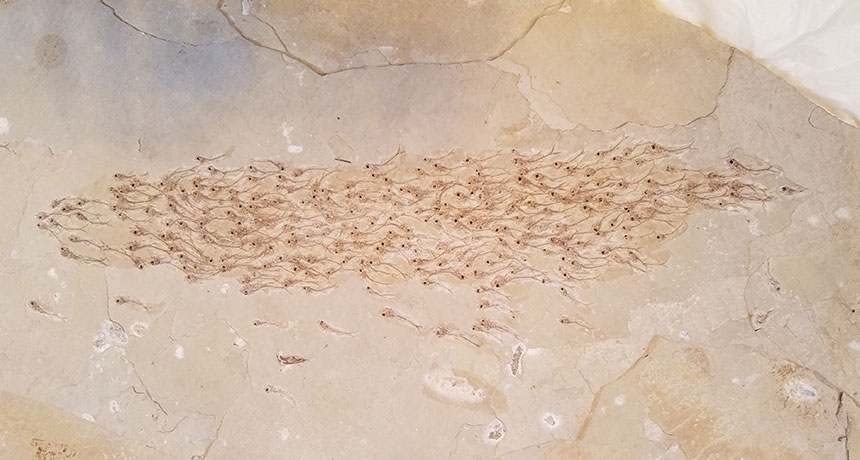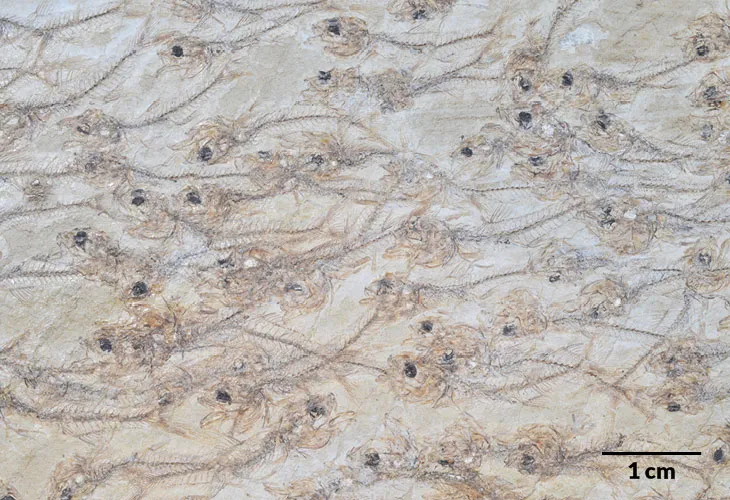A 50-million-year-old fossil captures a swimming school of fish
This snapshot in time reveals that fish may have coordinated their motion long ago

PREHISTORIC SCHOOL A shoal of extinct Erismatopterus levatus captured in a fossil that dates to the Eocene Epoch suggests that schooling behavior in fish may have evolved tens of millions of years ago.
N. Mizumoto, S. Miyata and S.C. Pratt/Proceedings of the Royal Society B 2019






